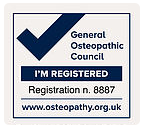
Poor ergonomics at work can lead to back pain
What do we mean by posture?
In effect we have two posture states. Active and Passive. Active posture is when you are controlling your muscles actively to achieve a certain position. Over time the body can ‘learn’ the posture and it can be assumed very easily without much thought. Dancers for example learn a posture as do horse riders.
Passive posture is when the body naturally assumes a position of ease. A person’s standing posture or sitting posture is the one that the body naturally goes to. However because the human body has an amazing ability to adapt to its surroundings so our posture can adapt over time to lifestyle conditions we find ourselves in.
Athletes have different postures to hairdressers, builders or office workers.
It is this adaptability of posture based on our surroundings that can cause us problems. As we work at desks, in front of computers, typing, answering the phone for hours at a time our posture changes to adapt to these activities.
Implications of our posture to our health
Over time our bodies adapt to these working surroundings. Many of us spend 30-40 hrs a week doing this activity. The majority of our daily lives.
With the prevalence of desk tops, laptops, mobiles and tablets we spend most of our time with our hands in front of us, arms and shoulders forward and our heads up.
In turn our mid spine has to bend forward, our necks bend backwards and our chests become concaved. Our postural muscles that would normally help stand erect are either permanently on stretch or contraction, 8 hours a day, 5 days a week. Sometimes more at the weekend.
Whilst these muscles are designed to work for long periods without rest, unlike our calf muscles or hamstrings that can get cramps after relatively short periods of exercise, they can eventually become strained or go into spasm.
A viscous circle of compensation
The body continues to compensate for the muscles in spasm with other muscles taking the extra strain. Joints become stiff as the muscles that move them are not working as well.
With our shoulders forward, the chest doesn’t expand to its full capacity which means that our lungs don’t inflate fully and we have less oxygen coming into our bodies. Muscles need oxygen otherwise they start building up lactic acid, again leading to cramps, spasms and knots.
Patients describe pain as aching, tightness, stiffness, knotted muscles or sometimes headaches along one side of their head.
What can we do to help ourselves?
Well you could leave your desk job, throw your laptop in the bin and become a small holding farmer. But that might lead to a whole world of other problems ……
Alternatively,
Give your postural muscles a break whenever you can.
A holiday for postural muscles means a break from the day to day and giving them fresh nutrients as often as possible.
Take regular exercise. Try and work into your week some time to do 30 mins of exercise that gets the blood pumping round your body. Cycling, running, swimming, walking are all low cost ways of achieving this. Try , if you can, to incorporate them into your working day.
Whilst at work
Have mini breaks. Get up from your desk every half hour and get your shoulders, neck and upper back moving again with some simple exercises.
Exercise 1
The shoulder roll. Roll your shoulders forward 10 times and backwards 10 times.
Exercise 2
The figure of 8. Place your right hand on your left shoulder. Take your left hand under your right arm and place it on your right shoulder. Your elbows should be more or less aligned in front of you.
With your elbows trace an imaginary figure of 8 in front of you. It should be no bigger than 6”/15cm tall. This is excellent for improving movement through your upper and mid spine.
Exercise 3
Find a door way. Place your hands either side of the door frame, as if you were about to do a standing up press up. Then let your body slowly pass through the door frame. You should feel a stretch of your chest muscles (pectorals). These have become short and tight with your arms and shoulders forward as you have been typing at your desk. This helps open up your chest, allowing for better breathing and takes the strain off some of your back muscles.
Exercise 4
Drink plenty of water. This helps keep your muscles and skin well hydrated and ensures the body has plenty of opportunity to take away waste products from the muscles that are working hard keeping you in your forced typing/desk position. There are also secondary benefits too. You have to get up out of your seat and go the water cooler or tap to get a refill so giving you a natural break and most likely you will be going to the loo more often.


